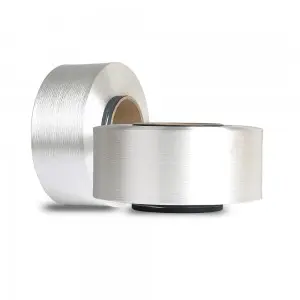Uses of polyester hot melt yarn: It mainly plays a thermal bonding effect and is used in industries such as bonded wire weaving, high-strength webbing, wool carpets, padding, and automotive lining. For polyester hot melt yarn, there are mainly the following advantages.
⑴ Good wear resistance. The wear resistance is second only to nylon with good wear resistance, which is better than other natural fibers and synthetic fibers.
⑵ Good thermoplasticity and poor melting resistance. Because polyester has a smooth surface and tightly arranged internal molecules, polyester is a fabric with good heat resistance among synthetic fiber fabrics. It has thermoplasticity and can be made into pleated skirts, and the pleats are durable. At the same time, polyester fabrics have poor melting resistance and are prone to forming holes when encountering cigarette ash, sparks, etc. Therefore, when wearing, try to avoid contact with cigarette butts, sparks, etc.
⑶ Heat-resistant polyester is made by melt spinning, and the formed fibers can be heated and melted again, belonging to thermoplastic fibers. The melting point of polyester is relatively high, while the specific heat capacity and thermal conductivity are relatively small, so the heat resistance and thermal insulation of polyester fiber are higher. It is the best among the composite fibers.
⑷Good elasticity. The elasticity is close to that of wool, and it can almost recover when stretched by 5% to 6%. The wrinkle resistance exceeds that of other fibers, that is, the fabric does not wrinkle and has good dimensional stability. The elastic modulus is 22 to 141 cN/dtex, which is 2 to 3 times higher than nylon. .Polyester fabric has high strength and elastic recovery ability, so it is durable, wrinkle-resistant and iron-free.
⑸High strength. The strength of short fibers is 2.6 to 5.7 cN/dtex, and that of high-strength fibers is 5.6 to 8.0 cN/dtex. Due to its low hygroscopicity, its wet strength is basically the same as its dry strength. The impact strength is 4 times higher than that of nylon and 20 times higher than that of viscose fibers.
Post time: Sep-14-2024

